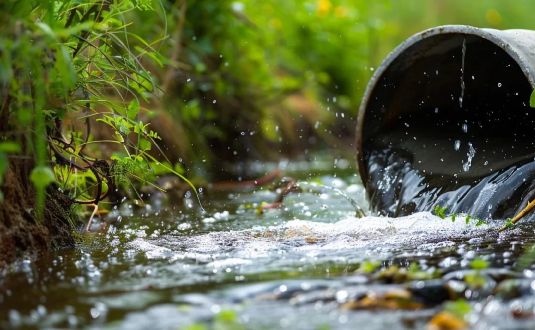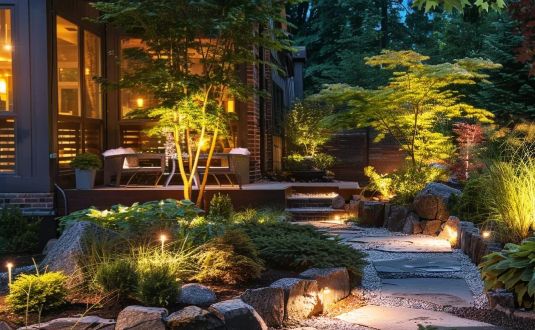Providing Best Services in Huntsville, AL
Providing Best Landscaping Services in Huntsville, AL

.webp)

.webp)
Does weed paper get rid of Bermuda Grass?
Weed fabric alone won’t fully eliminate Bermuda grass, as its deep roots and aggressive runners can push through or grow around barriers. Effective removal requires a combination of methods like deep digging, solarization, and thick mulch layers. For long-term control, installing deep edging and maintaining structured planting zones can help prevent regrowth in lawns and garden beds.
Even with landscape fabric installed, Bermuda grass often finds small gaps to resurface. Over time, its roots can penetrate weaker materials, making it difficult to control. To improve effectiveness, multiple layers of fabric combined with mulch or gravel offer better suppression.
Why Bermuda Grass Is Hard to Kill
Bermuda grass spreads aggressively through rhizomes, stolons, and deep root systems, making it one of the hardest grasses to eliminate. Unlike shallow-rooted weeds, it grows up to 6 inches deep, allowing it to survive even when the top layer is removed.
Its underground runners enable regrowth even after cutting or pulling. Small root fragments left in the soil can sprout new shoots, making complete removal a challenge. Without consistent control methods, it quickly takes over lawns and garden beds.
Best Way to Remove Bermuda Grass
Completely removing Bermuda grass requires multiple strategies since its deep roots and runners allow it to regrow.
Digging out the grass manually works best when removing at least 6 inches of soil to extract the entire root system. Smothering it with black plastic or thick layers of mulch cuts off sunlight, weakening the plant over time. Applying non-selective herbicides can also help, but repeated treatments may be necessary for full eradication.
For areas with persistent regrowth, soil amendment and repair can improve soil structure, making it easier to control Bermuda grass long-term.
Does Landscape Fabric Prevent Regrowth?
Weed fabric alone cannot permanently stop Bermuda grass, but it can slow its spread when combined with other methods. The grass's rhizomes and stolons allow it to push through weak fabric or grow around the edges.
For better results, using high-quality, heavy-duty fabric and covering it with 3–4 inches of mulch or gravel improves suppression. However, without regular maintenance, Bermuda grass may still find gaps and resurface. Professional landscaping installation can help create effective barrier systems to minimise regrowth.
Alternative Methods to Control Bermuda Grass
Several methods work better than weed fabric when trying to remove Bermuda grass.
Solarisation, which involves covering the area with black plastic for 4–6 weeks, uses heat to kill roots. Applying non-selective herbicides weakens regrowth but may require multiple applications. Digging out the entire root system at least 6 inches deep prevents most re-sprouting.
For long-term control, landscape design services can help create structured planting zones that naturally limit Bermuda grass growth.
How to Prevent Bermuda Grass from Growing Again
Preventing Bermuda grass regrowth requires consistent maintenance and barrier methods.
Installing deep edging (6–8 inches below ground) blocks underground runners from spreading into garden beds. Keeping a thick mulch layer (3–4 inches) deprives it of sunlight, weakening new shoots. For areas prone to infestation, landscaping installation can create structured planting zones that limit grass intrusion.
Regular monitoring and removing small shoots before they spread prevent Bermuda grass from re-establishing.
Final Thoughts on Using Weed Paper to Control Bermuda Grass
Weed paper or fabric can slow Bermuda grass growth, but it does not guarantee full removal. Its deep root system and aggressive spread make it difficult to stop with barriers alone.
For the best results, combining multiple control methods like solarisation, deep digging, and strategic mulch use provides a long-term solution. If Bermuda grass is a recurring problem, professional landscaping services can help design a yard layout that reduces unwanted regrowth.
Frequently Asked Questions
Can Weed Fabric Alone Kill Bermuda Grass?
No, Bermuda grass can push through weak spots or grow around edges, requiring additional control methods.
What Is the Fastest Way to Get Rid of Bermuda Grass?
Digging out the roots at least 6 inches deep or using solarisation for 4–6 weeks can be effective.
Will Mulch Stop Bermuda Grass from Spreading?
Thick mulch layers (3–4 inches) help weaken Bermuda grass but may not completely stop underground runners.
Does Vinegar Kill Bermuda Grass?
Household vinegar is not strong enough, but horticultural-strength vinegar can damage Bermuda grass with repeated applications.
How Do I Stop Bermuda Grass from Invading Flower Beds?
Installing deep edging barriers and keeping a mulch layer helps prevent spread into flower beds.
Stay Connected and Inspired
Get the latest landscaping tips, seasonal care guides, and exclusive offers delivered straight to your inbox. Don’t miss out on expert advice and ideas to transform your outdoor spaces.
Sign Up for Our Newsletter Today!


Your Next Idea Awaits
Stay inspired with our latest landscaping tips and trends.
.webp)
.webp)

.webp)
.webp)
.webp)
.webp)
.webp)

.webp)








.webp)
.webp)





